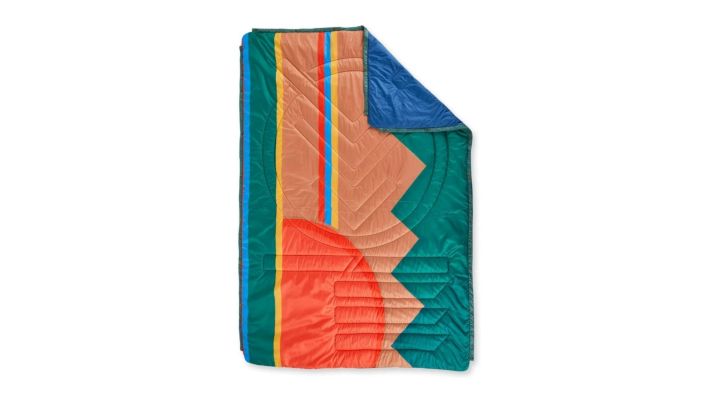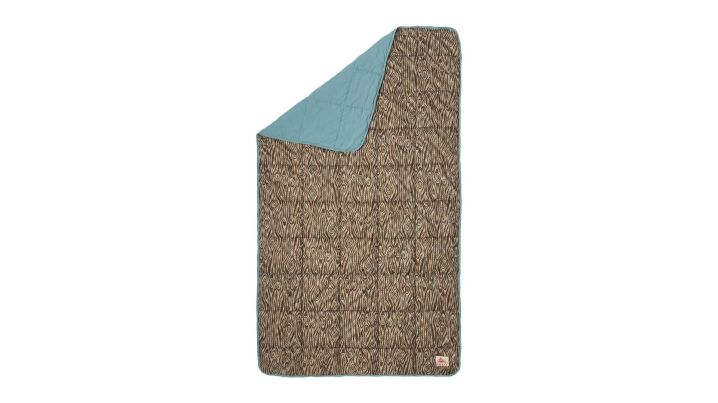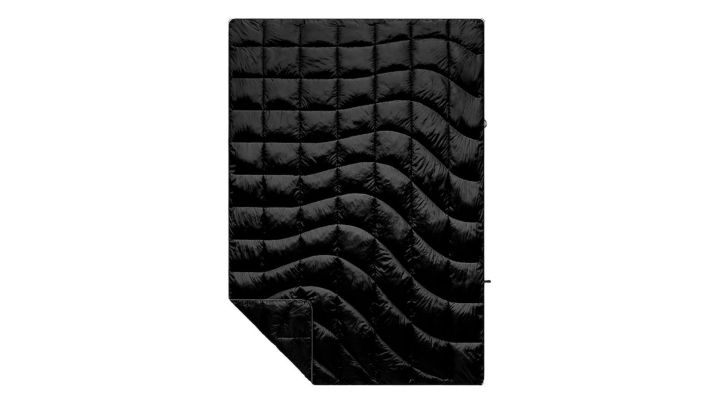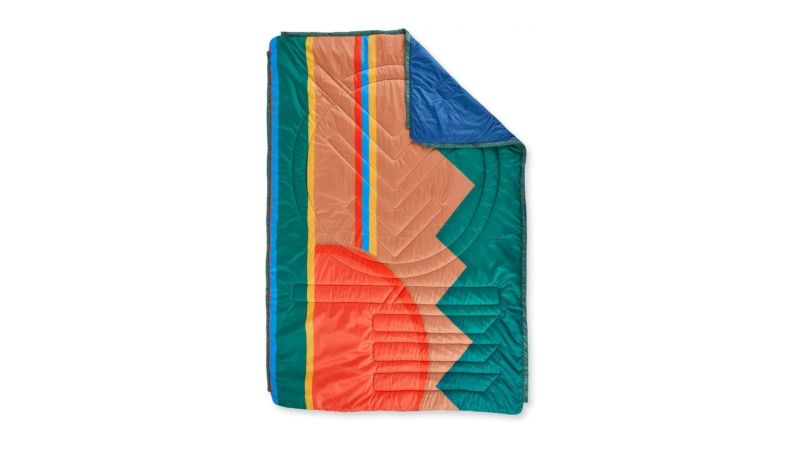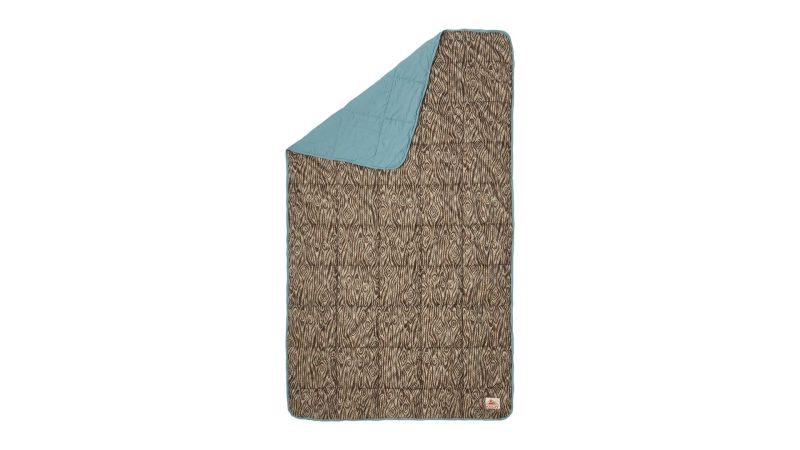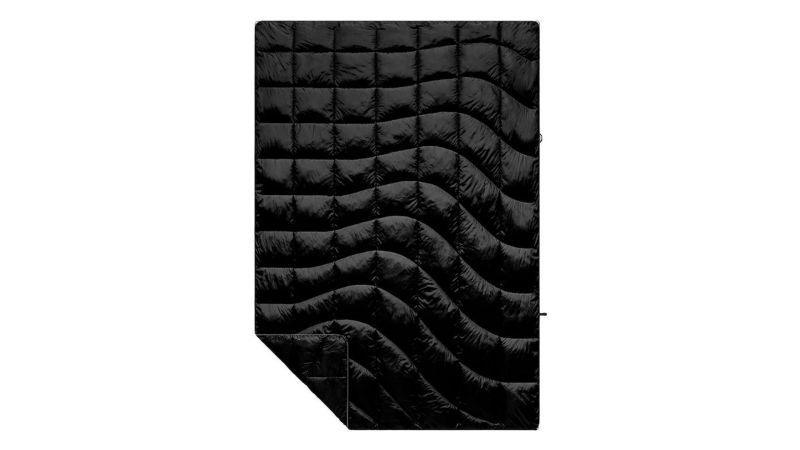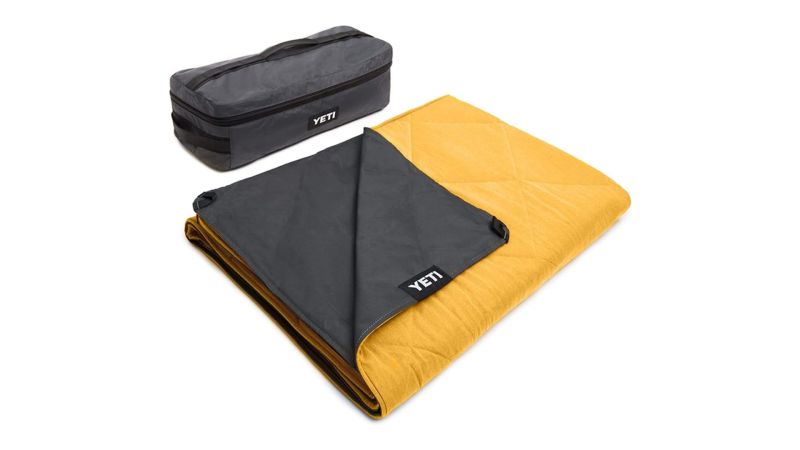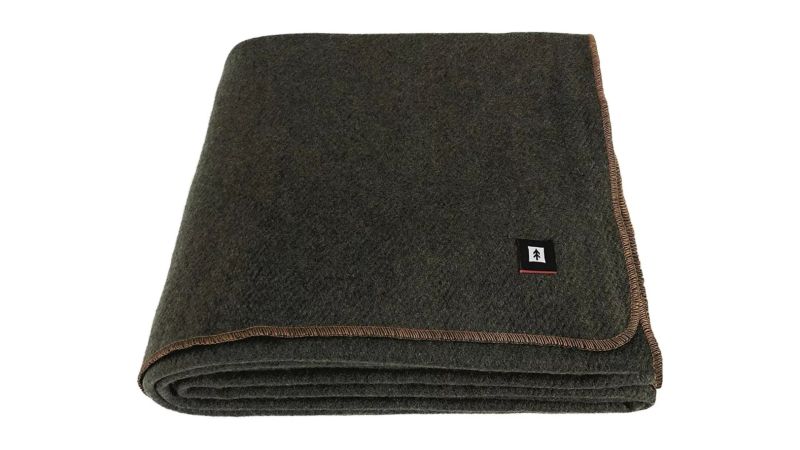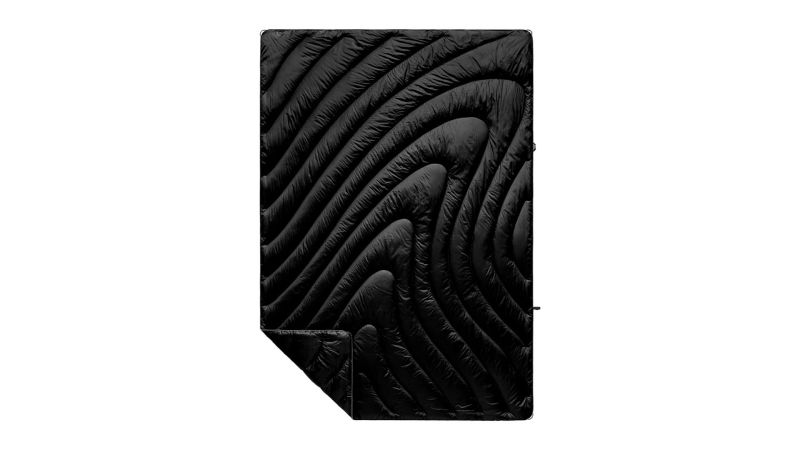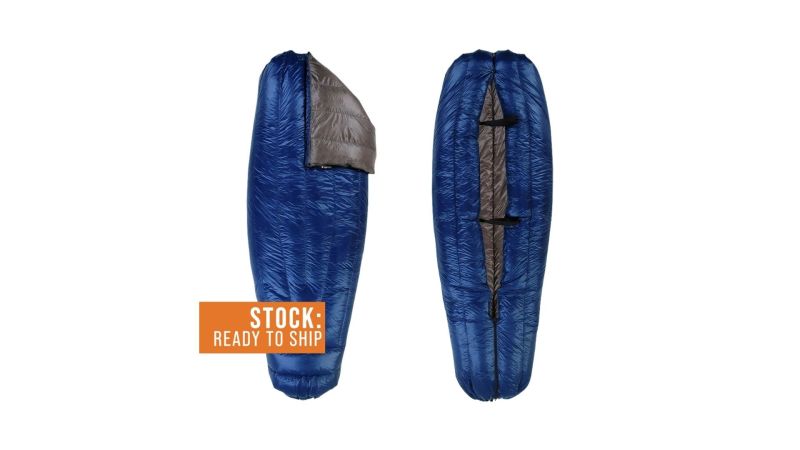We may earn revenue from the products available on this page and participate in affiliate programs.
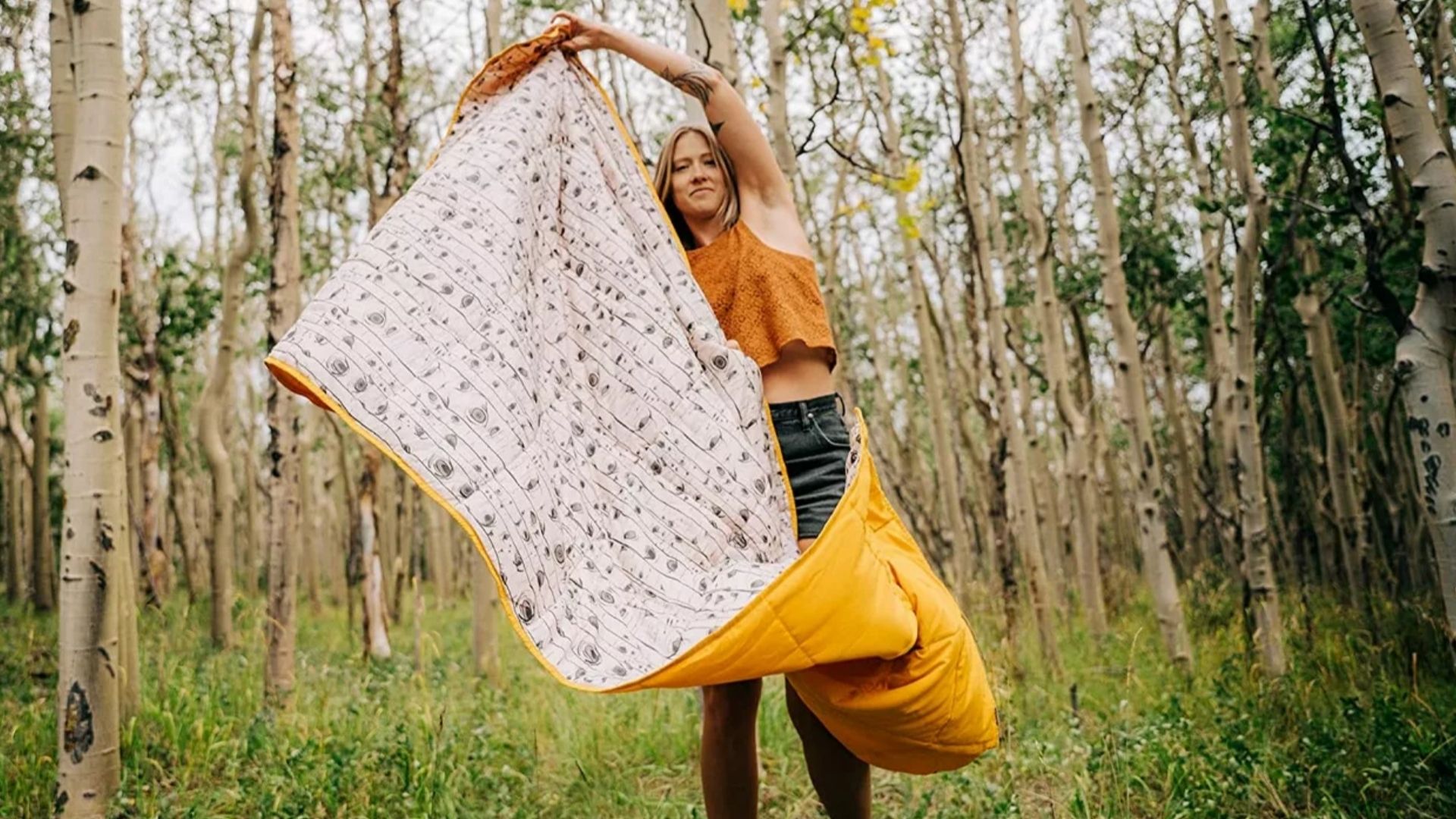
A camping blanket may not be the first piece of gear that comes to mind when you start packing for your next outdoor excursion, but ask any hardcore camper and they’ll tell you a quality camping blanket is the difference between misery and warm, soft, comfy camping bliss. If you’re reading this article, you might already know that there are as many types of camping blankets as there are varieties of knives or multitools. Whether you’re taking in the night sky at home, winter camping at elevation, or headed out to the mandatory annual family campground trip, there’s a camping blanket to fit your needs.
To that end, we’ve put together a guide to the best camping blankets on the market. Read on and never suffer the cold again.
- Best Overall: Voited Ripstop Outdoor Blanket
- Best Value: Kelty Bestie Blanket
- Honorable Mention: Rumpl Down Puffy Blanket
- Best Glamping Blanket: Yeti Lowlands Blanket
- Best Survival Blanket: EKTOS 100% Wool Blanket
- Best Backpacking Blanket: Rumpl Original Puffy Blanket
- Best Cold Weather Blanket: Enlightened Equipment Revelation Quilt
Best Overall
Voited Ripstop Outdoor Blanket
Best Value
Kelty Bestie Blanket
Honorable Mention
Rumpl Down Puffy Blanket
Best Glamping Blanket
Yeti Lowlands Blanket
Best Survival Blanket
EKTOS 100% Wool Blanket
Best Backpacking Blanket
Rumpl Original Puffy Blanket
Best Cold Weather Blanket
Enlightened Equipment Revelation Quilt
What to consider when buying a camping blanket
Gear makers use specific terminology to describe and rate camping blankets — along with other insulated outdoor fabrics. You can also use this language to understand the quality of the material you’re thinking about buying. In this section, we list out four key characteristics and how they’re measured.
Denier
Often seen as 10D, 40D, 75D, etc., it can refer to any type of fabric and relates to how much a single strand of a certain length weighs. A higher number results in heavier and more durable fabrics while a lower number results in more breathable and flexible fabrics.
Fill power
Often seen as 300fp, 600fp, etc., it refers to how much space a given type of insulation (or “fill”) takes up. A single ounce of 300 fp insulation takes up 300 cubic inches. The higher the fp number, the more space one ounce of fill takes up, and the more insulation it provides for a given weight.
Fill type
Fill type is another way of saying insulation, and when it comes to camping blankets, there are two kinds. The first one is natural fill, which is down of one kind or another. The other type is synthetic fill. While down is generally considered warmer and lighter, synthetic costs less and is more water-resistant (it’s also machine-washable).
Windproofness
The windproofness of a camping blanket is measured in the cubic feet per minute (cfm) of air that can pass through the material. Lower numbers result in more windproofness. For example, 1 cfm is considered almost completely windproof (and typically has a higher denier).
FAQs about camping blankets
Q: Which is better for camping, a sleeping bag or blanket?
A: This depends on your camping situation and preferences. A sleeping bag is generally larger, heavier, and bulkier/less packable than a blanket, but is typically warmer than a blanket. Also, there are many more sleeping bag options on the market than camping blankets at this time, so finding a sleeping bag for a particular situation may be easier than finding a camping blanket. However, a camping blanket is typically more versatile than a sleeping bag and, along with reduced weight and increased packability, it might be the right choice for your camping situation.
Q: How do I choose a camping blanket?
A: There are several major considerations when choosing a camping blanket. Most importantly is comfort. How cold is it going to be where you’re going? Is there a “comfort side” to the blanket? Next is weight and packability. Are you going on a several-day hiking or camping trip? If so, you’ll want a light, compact blanket. Durability and water resistance are important considerations as well. For car-based camping without pets, a lighter-duty blanket may work. For backpacking or camping with dogs, you’ll want a tougher blanket.
Q: Do Mylar camping blankets really work?
A: Mylar blankets have several legitimate uses. If you’re counting on mylar to be your sole warmth-retaining layer, you’ll be disappointed. However, when combined with a more traditional sleeping bag, blanket, or clothing layers, mylar does help to keep wind and rain at bay and to retain heat. Mylar blankets can also be used as a ground sheet, to reflect campfire heat back to you, or for signaling. Given their extremely compact size when folded and their light weight, adding a Mylar blanket to your camping kit is not a bad idea.
Our verdict
Looking for an incredibly versatile camping blanket that is durable, highly water-resistant, packable, and warm enough for most camping situations? Our overall pick, the Voited Ripstop Outdoor Camping Blanket is calling your name. If you’re looking for a great blanket on a budget, look no further than the ultra-comfy, lighter-duty Kelty Bestie. Need all of the performance and price isn’t a consideration? The seriously impressive Rumpl Down Puffy Blanket has it all.
Methodology
How did we determine the best camping blankets? As always, I rely first on personal experience. From the sometimes frigid mountains of Afghanistan to the cool nights on the hard-packed sand of Iraq, to spring and fall tent camping in Wisconsin, I’ve used several types and styles of blankets made of multiple different materials.
When I couldn’t get hands-on with a reviewed blanket, I did a deep dive into the manufacturer’s website as well as independent third party reviews to determine build country/quality/materials, warranty, etc. From those contenders, we reviewed only the most consistent highly-reviewed blankets. As always, Task & Purpose is independent and uninfluenced in all of its reviews. For more information on our methodology, check out the Task & Purpose review guidelines.
Below is a list of criteria used to determine the winners.
- Comfort: What is a blanket for if not to increase comfort in an otherwise less-than-ideal situation? Whatever other attributes a blanket may have, if it isn’t comfortable, no one will use it.
- Packability: After comfort, the next most important factor for a camping blanket is packability. We’d all love the snuggly goodness of our favorite eight-foot quilted blanket that lives draped over the back of the couch, but we would not love to sacrifice other essentials in our pack because the monstrosity takes up all of our space. A camping blanket has to squish down and pack well or it gets voted out of our pack.
- Price: For all but the one percent, value for the dollar is an ever-present consideration.
- Weight: Most camping blankets are pretty light, but as I have a personal relationship with the concept that every ounce counts, take it from me that some camping blankets are better suited to long-distance altitude-gaining treks than others due to their extremely lightweight design.
- Build quality/material: Polypropylene, wool, cotton, nylon, and combinations thereof, oh my! There are pros and cons to each material and some lend themselves better to camping than others.
- Size: Most camping blankets are designed for either one or two people. Not much variation, but an important consideration.
- Extra features: Closeable foot box? Dog-resistant? More waterproof than average? Has pockets? Some blankets have handy little features that might get you handing over your greenbacks.
